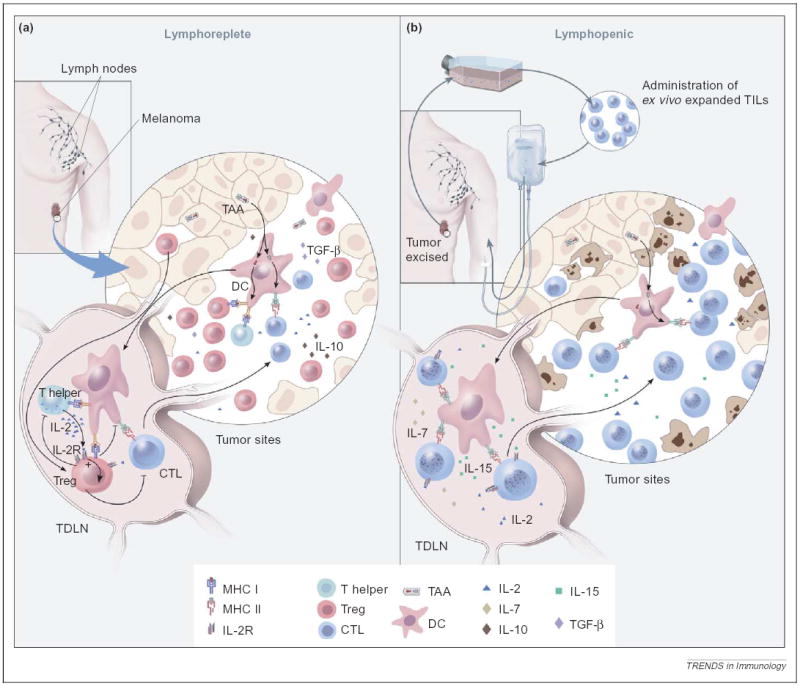Figure 3.

Removal of the inhibitory effect of Treg cells and activation of DCs by lymphoablation. (a) Under normal homeostasis, Treg cells (red) in the tumor draining lymph node (TDLN), might exert inhibitory effects on the transferred tumor-specific T cells (blue). In addition, Treg cells might prevent CD4+ Th cells (green) from providing supportive cytokines, such as IL-2 (blue). DCs (pink) in the tumor, which cross-present tumor-associated antigens (TAAs), might induce tolerance in the absence of inflammation and in the presence of immunosuppressive cytokines, such as IL-10 (brown) and TGF-β (purple). The net outcome of these inhibitory factors could abrogate an effective antitumor response. (b) After the induction of lymphopenia, ex vivo expanded tumor-reactive TILs are adoptively transferred (blue). This preconditioning before cell transfer effectively eliminates Treg cells and other cytokine-competing cells, thus removing inhibition and freeing supportive cytokines, such as IL-2, IL-7 (yellow) and IL-15 (green). The ablative conditioning might also activate DCs that are capable of cross-presenting TAAs in the presence of danger signals. The effect of ablation is a ‘permissive’ and activating environment that augments tumor-specific T cell-induced tumor destruction.
